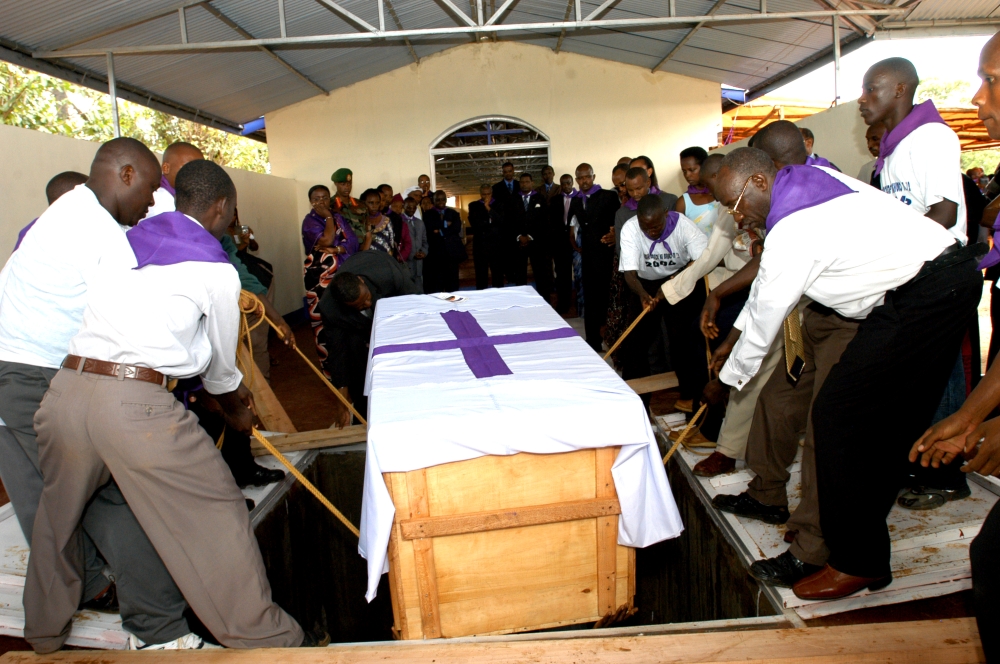

May 1, 1994, marked the continuation of the Genocide against the Tutsi, as atrocities entered a new month.
Like the early days of the genocide, perpetrators persistently targeted locations where Tutsi sought refuge, launching brutal attacks to exterminate them en masse.
ALSO READ: April 30, 1994: Tutsi massacred in Gisenyi’s commune rouge
For instance, on May 1, the killers in southern Rwanda focused their violence on Tutsi seeking refuge at Karama hill in Butare.
Karama areas were densely populated by Tutsi residents as well as those who had fled there from various parts of the country amidst the widespread killings.
Previously, on April 18, several Tutsi in Karama had attempted to flee to Burundi through Kibilizi to Mpanda port on the Akanyaru River.
However, they were forcibly repelled by a local leader named Ephron Hitimana and Interahamwe militia, who not only denied them passage but also robbed them of their possessions.
ALSO READ: April 24, 1994: Tutsi killed in Kabgayi, Ruhango
On May 1, 1994, the Interahamwe militia launched a vicious assault on Karama hill, blocking all escape routes to prevent the Tutsi from fleeing.
Despite brief resistance and attempts at self-defense by the Tutsi, the attackers overpowered them with superior weaponry, including firearms and grenades. The onslaught lasted for more than four hours, resulting in a massacre only halted by the onset of rainfall.
After the killings, the murderers looted the possessions and livestock of the Tutsi. More than 30,000 Tutsi died at Karama Hill in a number of attacks carried out there.
Meanwhile, at Nyundo Catholic Church in Rubavu district, more Tutsi were slaughtered on May 1, 1994.
ALSO READ: April 23, 1994: Tutsi thrown into Nyamagana pond, Burundians take part in killings
Hatred and suspicion against the Tutsi in the Nyundo area had been simmering since around 1990, as they were often accused of collaborating with the RPA Inkotanyi rebel group. Consequently, many Tutsi in the area faced arrest and imprisonment on such grounds.
When the genocide against the Tutsi erupted on April 7, 1994, the Tutsi population in Nyundo became immediate targets. For example, those seeking refuge at Petit Seminaire de Nyundo were massacred on the first day of the genocide.
Survivors of the attack fled to the Diocese on April 8, where they spent the entire day defending themselves against Interahamwe attacks using improvised weapons like stones and tiles.
On May 1, 1994, the Interahamwe launched a deceptive campaign, falsely promising peace and urging Tutsi hiding in various locations to come out and seek refuge at Nyundo diocese, where they purportedly would be safe.
ALSO READ: April 22, 1994: Catholic nuns turn away Tutsi seeking refuge at monastery
Tragically, many Tutsi fell into the trap and converged at the Diocese, only to be slaughtered by Interahamwe militants from Nyabihu and Kibirira. The attackers arrived in two fully loaded Daihatsu vehicles belonging to Nyabihu Tea Factory.
Approximately 1,000 people were killed that night. Some survivors managed to evade the massacre by hiding amidst the corpses of their fellow victims, while others fled into the surrounding bushes under harrowing circumstances, escaping detection by the killers.


